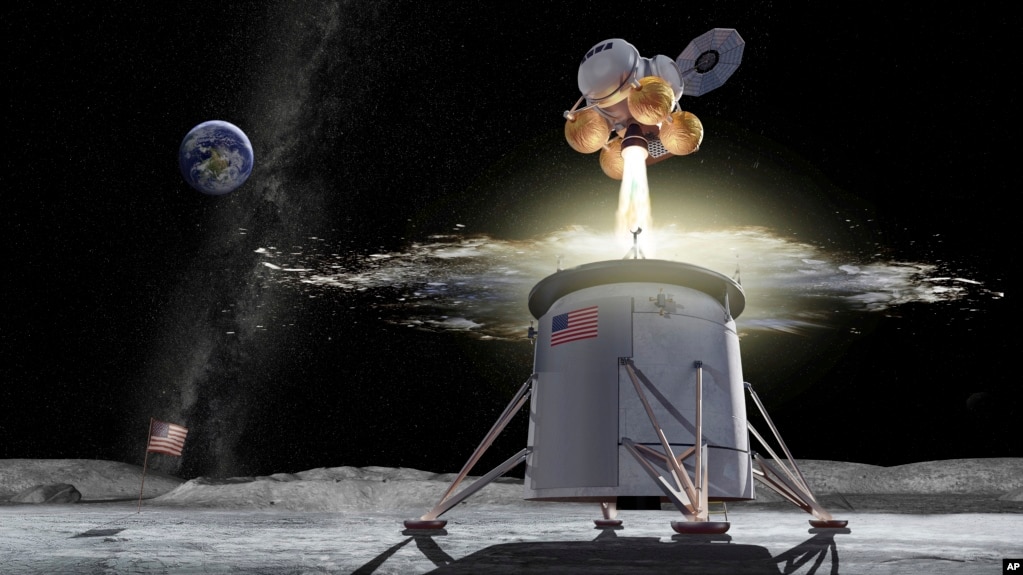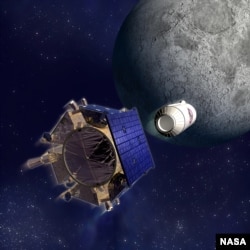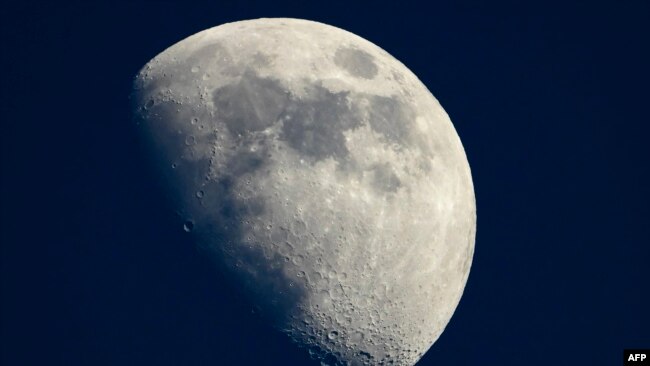As part of preparations NASA plans to send exploration vehicles to the moon to examine the planet’s huge water supply. The effort will follow up on a 2009 mission that confirmed the presence of water beneath the moon’s surface.
That mission, called LCROSS, sent a rocket crashing into the moon’s south pole. The crash sent debris flying from the moon’s surface and identified a large collection of water ice.
LCROSS was a major development in discovering this important resource on the moon.
NASA Administrator Jim Bridenstine called the LCROSS mission “a game changer.” He said the U.S. “should have immediately as a nation changed our direction to the moon so we could figure out how to use it.”
He spoke with Reuters news agency.
Bridenstine said the moon holds billions of tons of water ice. Experts have said the exact amount of water on the moon is not known. They have also said it is unclear whether the water is present in large pieces of ice or combined with moon soil.
So to learn more, NASA is working with a few companies to put exploratory vehicles on the moon’s surface by 2022.

Jack Burns is the director of the Network for Exploration and Space Science at the University of Colorado. He told Reuters it is important for such vehicles to get to the moon. They will be able to search for water, drill into the surface, and attempt to find ways to bring the water out.
Scientists say the water could be very useful in future activities on the moon. For example, they believe it may be possible to one day break down the water into its two main parts, hydrogen and oxygen. This could possibly be used to provide fuel for missions to deeper parts of the solar system.
Tony Colaprete was one of the main investigators for the LCROSS mission. He told Reuters that in the final weeks before the launch, the project experienced “a bad rush to the finish line.”
“We wanted to make as large of a hole as possible to get as many materials out of the shadows and into the sunlight,” Colaprete said. He said the fast-moving mission used some technology that had never been used in space before.
Colaprete added that the current moon program is also “forcing some cultural changes” at NASA. The U.S. space agency has experienced a series of high-level leadership changes and delays in the agency’s commercial crew program. That program aims to return U.S. human spaceflight for the first time since 2011.
Colaprete said in his opinion, “people are coming together in a way like they did on LCROSS.”
Bryan Lynn
Source News


No comments:
Post a Comment
Note: Only a member of this blog may post a comment.